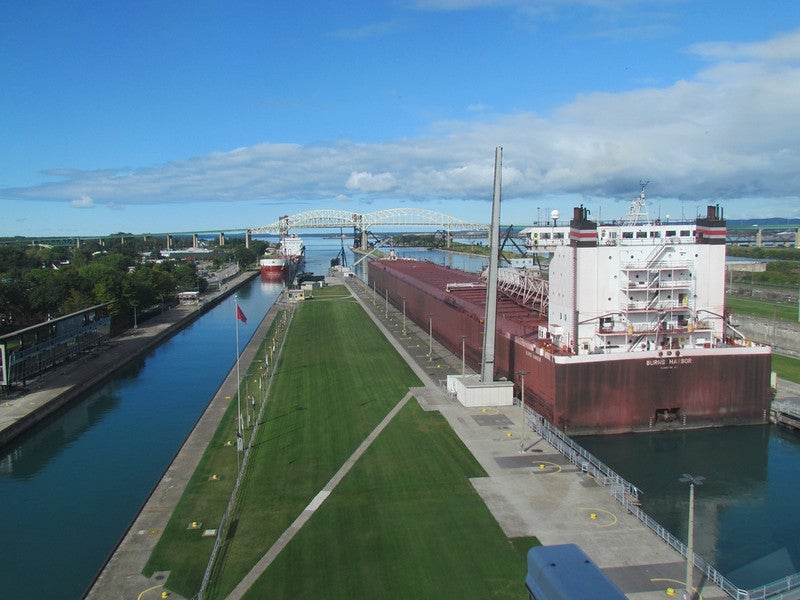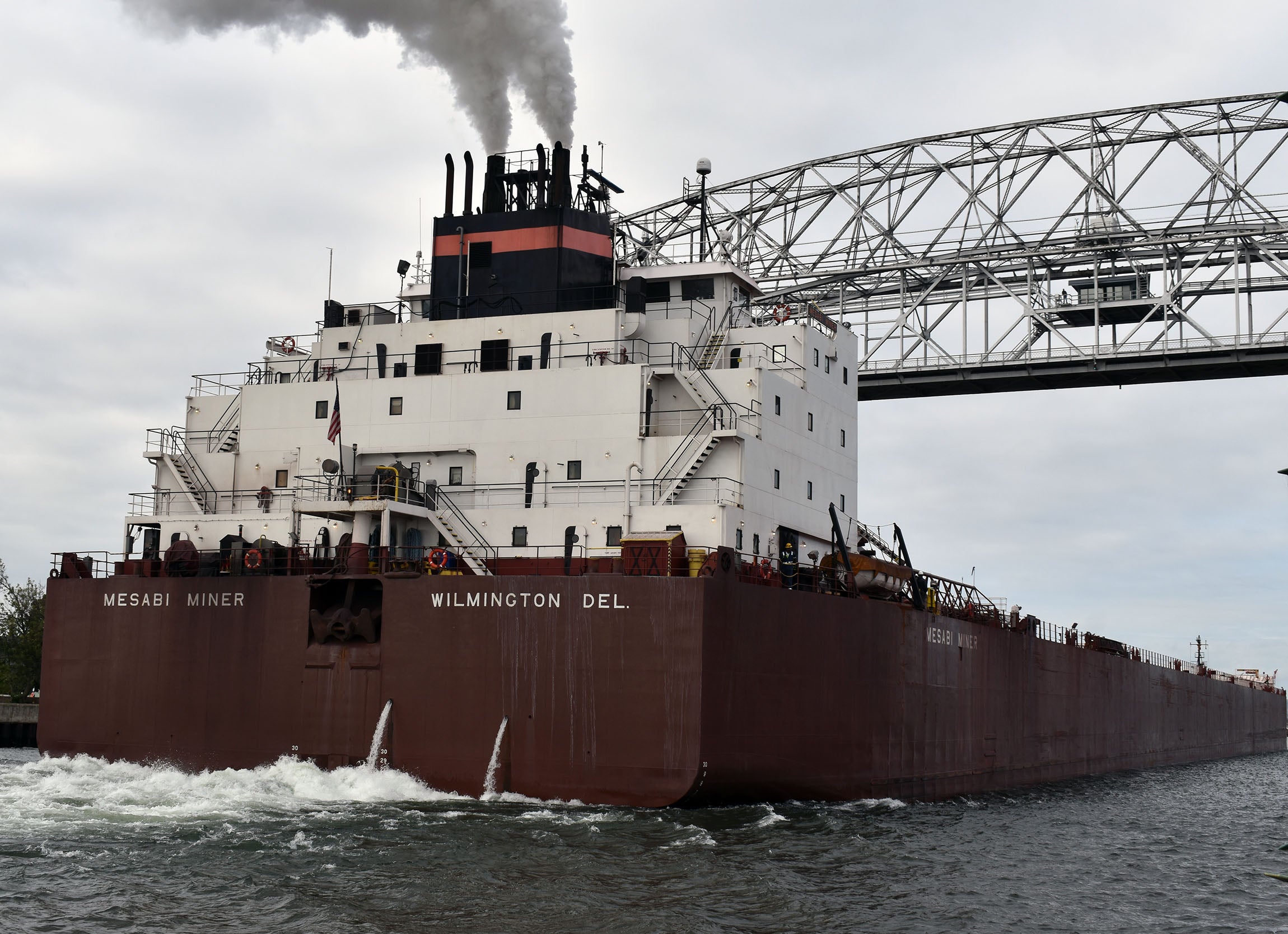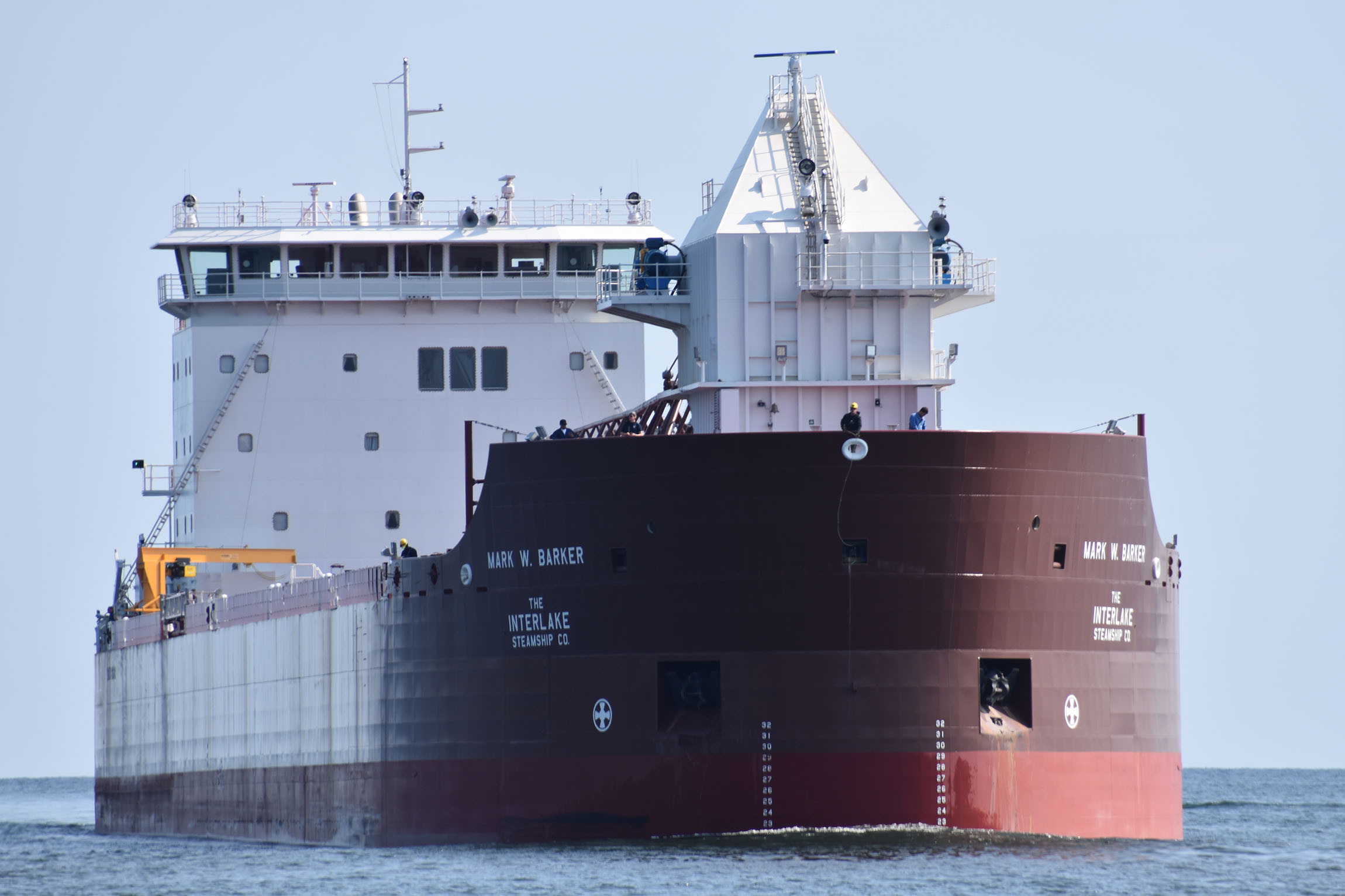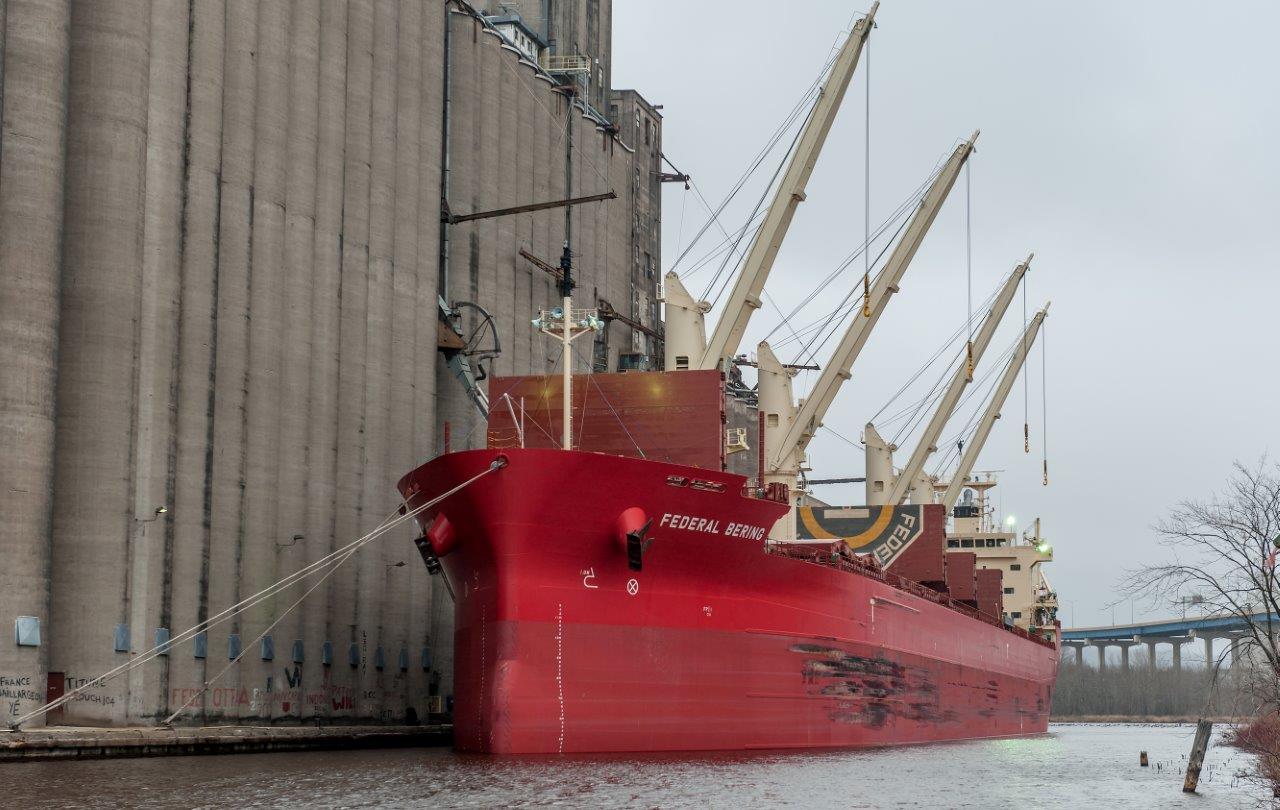Grain shipments on the Great Lakes-St. Lawrence Seaway are tracking around 25 percent ahead of last year due in part to drought conditions on the Mississippi River and Russia’s war in Ukraine.
Spanning 2,340 miles, the Seaway is a major trade route that connects the Great Lakes to the Atlantic Ocean. Through October, Great Lakes ports moved 934,000 metric tons of grain on the Seaway — up around 25 percent from the same time last year. Those shipments were bound for an estimated 18 countries.
“When there are issues in trade along the Mississippi (River), for example, which right now is operating under some drought conditions, you see a lot of those exports move to different multimodal centers, such as the Great Lakes,” said Adam Tindall-Schlicht, administrator of the Great Lakes-St. Lawrence Seaway Development Corporation. “I anticipate that might be one reason why we’re seeing this late push in export activity of agricultural commodities through the Seaway.”
News with a little more humanity
WPR’s “Wisconsin Today” newsletter keeps you connected to the state you love without feeling overwhelmed. No paywall. No agenda. No corporate filter.
Lower water levels in the Mississippi River and higher barge rates have hurt U.S. grain exports, which are down from last year. Barges have run aground, creating shipping jams along the river. Tindall-Schlicht said it’s also fair to assume the war in Ukraine is having ripple effects on the agricultural sector.
The Russian invasion of Ukraine, a major grain exporter, blocked grain shipments from Ukraine’s primary export routes via Black Sea ports until a joint agreement allowed shipments to resume in late July. At the same time, demand for corn imports has surged in the European Union as it’s seen its smallest crop in 15 years due to drought.
Based on historic trade patterns, Tindall-Schlicht said cargo shipments on the Seaway are typically bound for Canada, Europe, and developing markets like the Mediterranean and North Africa. Those are among destinations where the Port of Toledo ships grain. Joe Cappel with the Toledo-Lucas County Port Authority said the port on Lake Erie has seen a more than 28 percent increase in shipments of corn, soybeans, and other grains compared to the same time last year.
But not all Great Lakes ports have moved higher grain volumes, including the Port of Duluth-Superior. The largest and furthest-inland port on the lakes has seen its shipments decline to roughly 487,000 tons through October — down more than 13 percent from the same time last year and 44 percent below the 5-year average. The port is on track to see its second-lowest season since 1890 for grain shipments.
“Every year is different when it comes to grain,” Deb DeLuca said, executive of the Duluth Seaway Port Authority, in a statement. “It’s a very dynamic commodity in terms of supply, demand, pricing and routing. The world has seen two years of tightening grain supplies, further exacerbated by the war in Ukraine, and that coupled with the strong dollar, rising costs of transportation and competition from other countries’ less expensive wheat makes for a challenging market.”
Daniel Rust, a transportation and logistics management professor at the University of Wisconsin-Superior, said the volume of grain shipped out of the port is down due to higher vessel costs in light of high demand for ships worldwide. Another factor may be decreased shipments of wind turbine blades and towers coming off record years for wind cargo movement in 2019 and 2020.
“Since that is down this year, the amount of wind energy and other components coming in, the vessels that would normally pick up grain in the Twin Ports and take that grain out to the St. Lawrence Seaway and out on the oceans, it’s just not economically feasible for many of those vessels,” said Rust. “It’s too expensive to come in empty and then return with the grain.”
The price to ship containers from Europe across the Atlantic remains high due to limited capacity. Rust said vessels are going where they can make the most money. That means a lot of grain that comes into the port from the Dakotas and Upper Midwest is moving out by rail instead of vessels this year. Meanwhile, Rust said other lower cost alternatives like shipping grain by barge down the Mississippi River are not feasible since lower water levels have slowed exports.
“It’s a continuation of the disruptions we’ve seen globally, with the pandemic, with war in Ukraine, it’s one thing after another,” said Rust. “I think the main concerns I’ve seen is just the possibility of a rail strike. That could really impact exports.”
Two months ago, President Joe Biden and his administration reached a tentative agreement with rail companies and their workers to avoid a nationwide strike that could shut down freight trains. But, one of the nation’s largest railroad unions narrowly voted to reject that deal, union officials said Monday. Rail union SMART Transportation Division is expected to resume negotiations. All 12 rail unions must ratify a contract to avoid a strike, which could happen as early as Dec. 9.
That’s something that weighs heavily on the mind of Charles Wachsmuth, vice president of Menomonie-based Chippewa Valley Bean. The family-owned company is the self-described largest processor and exporter of kidney beans nationwide. Around 60 percent of all the beans they handle are exported to the European Union. A strike would mean the company can’t ship containers full of beans via rail to the ports.
Earlier this year, the company shipped nearly 200 containers holding around 9 million pounds of kidney beans from the Duluth-Superior port. Due to supply chain disruptions, the company sought out the port’s container service after dealing with a global container shortage, inadequate rail service, and congestion at the Port of Montreal.
“There’s no avenue that we’re not looking at, and unfortunately, you know, none of them are great right now still,” said Wachsmuth.
Wachsmuth said they should be shipping up to 100 containers of beans per week, but right now they’re shipping fewer than half that.
Wisconsin Public Radio, © Copyright 2026, Board of Regents of the University of Wisconsin System and Wisconsin Educational Communications Board.





